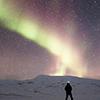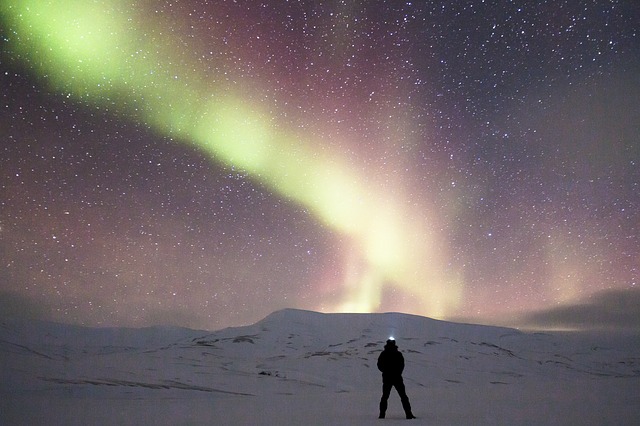
Cameras for Stargazing: A Beginner's Guide to Astrophotography


Have you ever found yourself inspired by a night sky filled with glimmering stars and wanted to take a picture, only to find that the picture just doesn't do it justice? It's disappointing to see a photo full of black space when the real sky was amazing, but with the help of modern technology and a few helpful pointers, anyone can take up astrophotography as a hobby and get better-looking results.
People just getting started with astrophotography might find themselves overwhelmed by the products that are out there to help them, but it's important to remember that you don't need to rush right out and spend a ton of money. Take the time to explore the options, reading over reviews online and considering your needs. You might also want to look at galleries of other people's photos to get an idea of what your goals might be.
Astrophotography History
- History of Space Photography: A timeline of techniques used in the 19th and 20th centuries shows how far we have come with methods of obtaining space images.
- History of Capturing Astrophotos: This article explores where this type of photography began.
- Timeline of Astrophotos: The history of astronomy images goes back quite far. This timeline shows how we got from then to now.
- Space Photography and its Beginnings: This brief introduction to astrophotography and its history gives us a glimpse into how our modern techniques measure up.
- The Rise and Fall of Space Photography: Sonoma State University provides a document that discusses the history of astronomy images here.
Equipment
- What You Need to Film the Night Sky: The Astronomical Society of Australia gives an overview of the needed items for photographing stars and planets.
- Afocal Digital Photography: DSLR cameras are good for more than just human portraits and landscape photos. One of the simplest ways to take photos of space is to point your camera at the eyepiece of a telescope.
- Software for Capturing Images of Space: The Gibraltar Astronomical Society discusses technology that can help in taking space images.
- Beginner Equipment for Astrophotographers: This guide explains the equipment and accessories you may want to have when getting started.
- Webcam Imaging Using a Small Telescope: Smaller telescopes sometimes gives us a hard time when trying to get quality images. This document teaches you how to fine-tune yours so that you get better-looking photos.
- Astrophotographer Gear: The Prescott Astronomy Club offers a podcast discussing what's needed to get started with astrophotography, and there's also a transcript provided.
Methods
- How to Take the Best Astronomy Images: As a beginner, getting the best photo can be tricky, but it's not impossible with a bit of know-how.
- Equipment Needed for Taking Astronomy Images: If you're concerned that getting started is too complicated, this article will help you. It gives a brief explanation of just how easy it can be to take astronomy photos.
- How to Take a Beautiful Photo of Space: With some basic equipment, even amateurs can capture some nice images of what's in the night sky.
- Equipment to Have for Astrophotographers: Novice astrophotographers are often confused about what to buy or what to do first. This site discusses the equipment you should have to get into this type of photography as well as some methods to help you be successful.
- How to Take Photos of Deep Space: Astrophotographers see some exquisite images, and they want to be able to capture what they see on film. Here's a guide explaining the steps you should take to get vibrant color photos.
- Astrophotography 101: Photographers usually rely on sunlight, but by pointing their lenses upward, they can take some great shots at night, too.
- Astrophotography Processing: To learn more about modern methods and techniques used in astrophotography, turn to this guide, which looks at how technology can improve the quality of these photographs.
- Photoshop Techniques for Your Images: If you want to use Photoshop for your photo editing, this guide can provide techniques to apply for the best astronomy photos.
- Piggyback Method: The piggyback method entails attaching a camera to a telescope that can be moved very gradually so that the camera stays pointed at the same stars, which allows for long exposures that capture stars in fixed positions rather than star trails.
Picture Sites
- Astronomy Image Gallery: Astronomy Online has many pictures of different types of nebulae.
- Astronomy Images: The Amateur Astronomers Association shows off a gallery of astronomy photos.
- Astronomy Photos: See some stunning images taken with a robotic telescope at the Robert Ferguson Observatory in California.
- Images of Space: This is a gallery of nebulae, asteroid fields, and more.
- Space Photos for Beginners: A gallery of photos shows some of the images that even beginners can capture.
- Orion the Hunter: Our universe has many constellations to view. These photos show Orion, but this site has pictures of other constellations as well.
- Star Map Photos: Sky mapping is standard in astronomy. This interactive sky map can help you determine what your camera is pointing at.
- Space Photos Using Equatorial Platforms: Some advanced telescopes mount onto an equatorial platform, which enables stability and controlled movement when capturing images.
- Galaxies: View photos of galaxies to see the kinds of images that are possible with a bit of practice.
- Astronomy Photo Gallery: The Curdridge Observatory displays photos taken with CCD cameras and reflecting Skywatcher telescopes.
General Astrophotography Resources
- Art of Astronomy Photos: National Geographic gives a perspective on this hobby from an astronomer who photographs space.
- Astrophotos Introduction: Learning to capture a great photo takes time and practice. This guide helps you understand the basics of making stellar pictures.
- Taking Space Photos Using an iPhone: Modern technology brings us a long way in astronomy photos.
- Space Photo of the Day: One of the best places to look online to see pictures of the cosmos is NASA's website.
- How to Photograph the Night Sky: This guide will help beginners learn how to take photos of the night sky using a DSLR camera.
- An Image of the Sombrero Galaxy: This photo came from the Kennon Observatory and shows the Sombrero Galaxy, which lies near the constellation Corvus.
- Tutorial for Taking Photos of Planets: Webcams are becoming more popular for astrophotographers. This tutorial teaches you how to use a webcam for astronomy photos.
- Amateur Space Photography: This document offers tips for amateur astrophotographers on how to achieve good results with their photos on a modest budget.
- DSLR Space Photography From Beginning to End: If you want some quick information on astrophotography, check out this document that introduces the topic and compares the results with DSLR cameras to CCD cameras.
- Finding the Best Telescope for Your Needs: Look at this document to learn about the features of telescopes and what you should consider when buying one.
